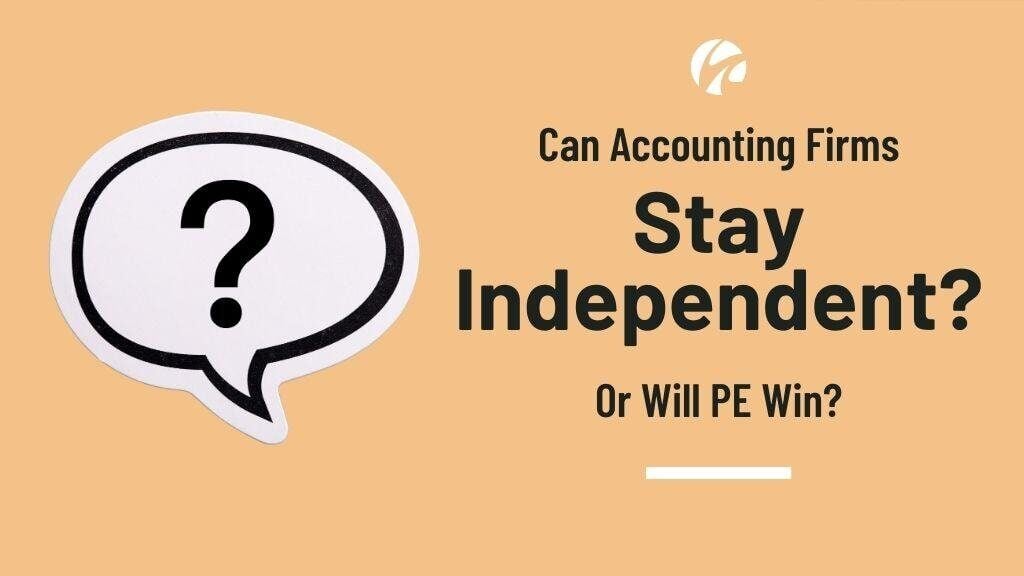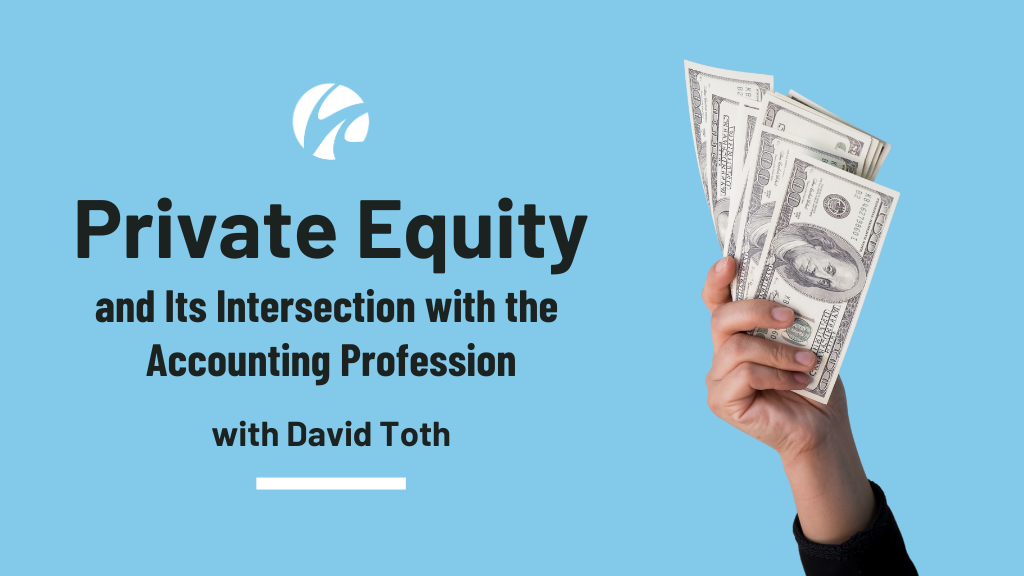4 min read
Is Your Firm Ready to Stay Independent?
Reprinted with permission from Accounting Today. Recent years have seen a wave of disruption in the accounting profession. M&A activity has...
4 min read
by:
.png) David Toth and Alex Drost
on
Apr 30, 2025
David Toth and Alex Drost
on
Apr 30, 2025
.png?width=300&height=300&name=David%20Toth%20%26%20Alex%20Drost%20(1).png)
Table of Contents

How much is your accounting firm worth?
It’s a question few leaders can answer with confidence. But in today’s era of private equity investments and strategic acquisitions and mergers, it’s a more salient question than ever. In short, the value of your firm is driven by the value investors place on the future cash flows of the business.
Understanding exactly how investors assign value to your firm arms you with the knowledge you need to grow the value of your own firm. If that’s a topic that interests you, keep reading, as we unpack the variables that drive enterprise value and explore how leaders can increase the value of their own firm.
In the eyes of private equity firms, strategic acquirers, and investors, the enterprise value of a business is driven by the discounted value of the future cash flows of the business. Put more simply, it’s the level of confidence investors have in the future cash flows of a business.
Various factors go into that determination.
The primary consideration is the EBITDA (Earnings Before Interest, Taxes, Depreciation, and Amortization) profitability of the firm. Obviously, countless variables drive EBITDA profits. The most obvious is the revenue of the firm, but perhaps the most important is the firm’s profit margins. In short, the more profitable a business is, the more valuable it tends to be.
Firms with high-margin advisory businesses tend to generate greater profits than smaller firms focused on more basic work. Firms that work with upmarket clients with more complex demands and larger budgets tend to have greater margins than firms that primarily serve individuals and small businesses. These types of firms tend to produce higher levels of EBITDA, which drives increased enterprise value. But while EBITDA profitability is the most important driver of value, it’s not the only thing investors are concerned with.
Together, sustained growth and strong EBITDA margins make a great pairing. Investors aren’t looking for stable businesses that aren’t growing – even if they produce decent cash flow. What’s more exciting––and valuable––is a business that pairs profitability with rapid, sustainable growth over a long time period.
Investors want to understand not just how a firm has grown historically, but also what its growth trajectory looks like going forward. This growth is typically measured in terms of revenue increase, but to really drive enterprise value, focus on EBITDA growth. Firms that primarily drive growth by developing higher margin revenue streams are the most valuable of all – a fact that’s largely responsible for the widespread growth in firms launching advisory services in recent years.
Forecast revenue growth and reliable EBITDA margins give investors a projection of where a firm’s cash flows will be in years to come, but there’s always uncertainty involved. That’s why investors assign a discounted value to these cash flows. The severity of that discount is driven by the risks faced by the firm.
The less risk investors feel a firm is subject to, the lower a discount rate they place on its future cash flows, leading to a higher enterprise value.
Several factors drive these risk calculations. One is the cyclicality of your business. Firms with reliable revenue streams, whether that’s recurring audit and tax work or subscription-style revenue from advisory services like outsourced accounting, tend to be viewed as less risky, since this revenue is highly predictable.
Another factor that drives risk is the diversity of a firm’s revenue base. Large, well-established firms with a broad range of solutions for clients spread across different sectors of the economy are unlikely to be materially affected by a downturn in any one industry or service line.
Compare that to the example of a small specialty tax firm that works exclusively with manufacturing companies. This firm faces far more risk and could be significantly devalued by new legislation or a downturn in the broader sector it serves. This type of firm is a riskier investment, and the discount rate investors apply to the firm’s enterprise value will reflect that.
Now that you understand what drives the enterprise value of an accounting firm, the next question is what you should do about it.
Let’s say you’re focused on boosting EBITDA margins. One step might be to launch a range of advisory services catered to the needs of larger businesses. Advisory services tend to be more profitable, and also add more diversity to your firm’s revenue base, reducing the risk rate investors assign to its future cash flows.
Another tangible, but less popular strategy, involves your firm’s partnership group sacrificing some compensation to drive EBITDA and fund investment in growth activities. Under the traditional partnership model that has defined CPA firms for decades, profits aren’t retained or reinvested in the business – they’re distributed among the partners.
Absent some major incentive, it’s difficult (read: near-impossible) to convince every single partner to sacrifice a portion of their current income to take a risk on the future. This is known as the scrape, a concept we explained in the previous article in this series: [INSERT LINK]
However, sacrificing a firm’s EBITDA margins to distribute all earnings to partners is a status quo that won’t fly with investors. If your firm does seek investment, know that doing so will catalyze change here. PE investors will require partners to lower their compensation in order to realize some future upside. It’s a trade-off that affects the type of investment your firm seeks. It may or may not be the right move for your firm: the calculation ultimately boils down to the risk tolerance of your partnership group and the strength of the underlying business.
If your firm is open to soliciting private equity or being acquired by a larger firm as part of a roll-up strategy, one of the best moves you could take today is to start actively measuring and managing your EBITDA. The first step, in many instances, is determining how to go about that, since in many firms, this isn’t a metric that’s actively tracked.
A good accounting firm might have an EBITDA margin of somewhere between 10 and 15%. Regardless of where your firm is at today, measuring EBITDA on a regular basis, and then making management decisions based on it, is the only way to understand whether your firm is growing enterprise value or not.
Need assistance navigating that process?

4 min read
Reprinted with permission from Accounting Today. Recent years have seen a wave of disruption in the accounting profession. M&A activity has...

Is independence still a viable path for accounting firms, or is private equity inevitable? In this insightful conversation, Gary Shamis, founder of...

4 min read
This article is an overview of a panel discussion at Winning Ways, the accounting profession’s only conference on practice management. Recent...